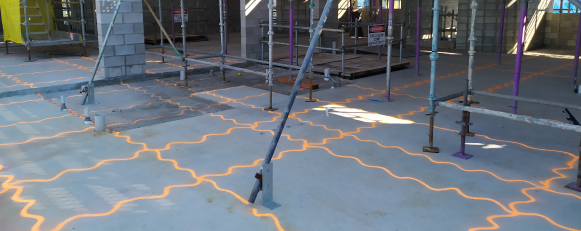When it comes to locating buried assets and utilities, ground-penetrating radar (GPR) technology has proven to be a valuable tool. However, it's crucial to understand that GPR is not a magic wand that can instantly uncover every hidden item beneath the surface. At South-East Scanning, we strive to provide transparent and accurate information to our clients, ensuring realistic expectations about what GPR can and cannot achieve. In this blog post, we will discuss four key limitations of GPR technology, enabling you to make informed decisions and optimise your utility locating efforts.
What Are These Limitations?
Depth Penetration
One of the primary limitations of GPR technology is its depth penetration capability. While GPR can effectively detect objects within the first few metres beneath the ground, its efficiency diminishes as the depth increases. Factors such as soil composition, moisture content, and the presence of large obstructions can significantly impact the penetration depth. It’s important to keep this in mind when setting expectations for GPR surveys, especially for projects that require the detection of deeper utilities or structures.
Object Detection and Resolution
GPR technology relies on the reflection of electromagnetic waves to identify subsurface objects. The clarity and resolution of these reflections are influenced by various factors, including the object’s size, material composition, and its proximity to other surrounding structures. While GPR can detect a wide range of materials such as concrete, plastic, metal, and voids, the identification of smaller or non-metallic objects may be more challenging. Clients should understand that GPR technology provides a general overview and may require additional methods or techniques to pinpoint specific objects accurately.

Environmental Interference
Environmental conditions can significantly affect the performance of GPR technology. Soil moisture, high levels of electrical conductivity, and certain types of geology can cause signal attenuation and interference, reducing the effectiveness of GPR surveys. Additionally, heavily congested areas with numerous utilities or complex structures may present challenges in interpreting the GPR data accurately. By considering these environmental factors, you can better gauge the limitations and potential constraints of GPR technology for your project.
Interpretation and Expertise
Although GPR technology can provide valuable data, the interpretation of GPR results requires expertise and experience. Proper analysis and understanding of the collected data are crucial to correctly identify buried assets and utilities. Trained professionals at South-East Scanning possess the necessary skills to interpret GPR data accurately and provide reliable recommendations based on the findings. Collaborating with experienced GPR service providers ensures a more comprehensive assessment and helps manage expectations regarding the limitations of the technology.
Conclusion
Ground-penetrating radar technology offers a non-destructive and efficient method for locating buried assets and utilities. However, it’s important to acknowledge its limitations and manage client expectations accordingly. Understanding the depth penetration capability, object detection and resolution, environmental interference, and the need for expert interpretation can help optimise the utility locating process. At South-East Scanning, we are committed to providing transparent information and high-quality GPR services, ensuring you make informed decisions for your projects. Contact us today to learn more about how GPR technology can assist you in your asset detection needs.